|
I am a Center of Particle Cosmology (CPC) Postdoctoral Fellow working on mathematical physics and high energy theory. Prior to this position, I was a Sherman Fairchild Postdoctoral Fellow at the California Institute of Technology, where I started after receiving a Ph.D. in Physics from Harvard University in 2019. My research is focused on understanding the fundamental nature of quantum gravity and quantum field theory and discovering mathematical structures therein, using and developing techniques from a variety of branches of theoretical physics and mathematics, including but not limited to conformal field theory, supersymmetric field theory, string theory, semiclassical gravity, quantum information theory, lattice gauge theory, algebraic geometry, and operator algebra. |
|
I am a high energy particle physicist with strong interests in cosmology. My early research involved the introduction of supersymmetry and supergravity into particle physics theories. Some of my key contributions were the introduction of Wilson lines in string vacua to break gauge symmetry to the standard model, a five-dimensional superspace called heterotic M-theory that serves as a string vacuum for realistic models of particle physics and the development of algebraic geometric methods necessary for the construction of gauge connections and explicit evaluation of the low energy spectrum. Within this context, I constructed heterotic vacua with exactly the particle spectrum of the minimal supersymmetric standard model with right-handed neutrinos. These theories were applied to cosmology, where a new theory of the early universe– ekpyrotic cosmology –was introduced based on colliding branes. More recently, I have given detailed renormlization group analyses of realistic superstring particle theories, studying phase transitions in the gauge group and explored their low energy predictions for the LHC. Within this context I has also consider aspects of late-time cosmology, including gauge domain walls, dark matter and baryogenesis. |
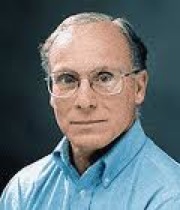 |
|
My research interest lies in a variety of problems of elementary particle physics ranging from the study of basic interactions to experimental tests of fundamental theories. My background is in basic theory (effective Lagrangian of superstring and M-theory, supergravity, and general relativity) as well as in phenomenology (implications of extended gauge structures and phenomenological implications of string theories), and I tend to pursue research that bridges the gap between basic theory and the experimental consequences of these theories. My main research contributions have been along the following directions: (a) Constructions of four-dimensional solutions of superstring theory and derivations of their phenomenological implication, (b) Nonperturbative gravitational physics in fundamental theory, (c) Supersymmetric black holes in string theory, and (d) Consistent non-linear Kaluza-Klein compactifications of string and M-theory and studies of M-theory dynamics on spaces with special holonomy. ➤ |
 |
|
I work on basic questions concerning the nature of space and time and on foundational issues in field theory and string theory. Some of my work has addressed the origin of gravitational thermodynamics and the emergence of spacetime as the effective description of underlying quantum degrees of freedom. My work has also made basic contributions to our understanding of field theory, partly via the AdS/CFT correspondence relating quantum field theories to theories of gravity. Finally, I have has developed new approaches to model building in the complex landscape of string vacua. ➤ |
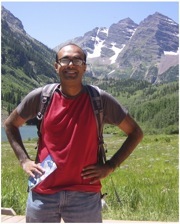 |
|
My research interests lie at the interface of particle physics and cosmology. A central theme of my research program is the possibility that the dark sector includes new light degrees of freedom that couple not only to dark matter but also to baryonic matter. Part of my research efforts over the last few years have focused on the development of screening mechanisms, such as chameleon and symmetron, to explain why such scalars, if light, have escaped detection from laboratory/solar system tests of gravity. The manifestation of these scalar fields therefore depends sensitively on their environment, which in turn leads to striking experimental signatures. Another central theme of my research program is the development of novel theories of the very early universe that can address the traditional problems of standard big bang cosmology and generate density perturbations consistent with observations. Part of my research efforts focus on alternatives to the inflationary paradigm,such as the Ekpyrotic Universe, in which the seeds of structure formation are generated in a long phase of slow contraction before the big bang.➤ |
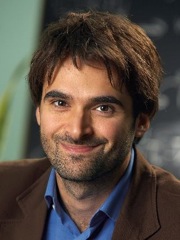 |
|
I study models that may shed light on the fundamental physics of the nature of dark matter, the origin of the baryon asymmetry, and the fundamental origin of inflation or other physics of the early universe. The goal is to use the clues contained in cosmological data to guide the construction of models of new physics. I am also interested in the role that cosmological data can play in constraining models of particle physics beyond the standard model. Such constraints can often provide complementary information about fundamental physics to that provided through terrestrial experiments such as those performed at colliders. My work within these areas has been broad, spanning approaches to dark energy and dark matter; extra dimensional models of particle physics and cosmology; the baryon asymmetry of the universe; inflation and its problems and alternatives; topological defects in cosmology; and the BPS structure of intersecting branes in supersymmetric theories. Specifically, my work has mapped out the space of viable models of the accelerating universe. This has included investigating the microphysical implications of exotic dark energy models, and proposing one of the most-studied approaches to the idea that a modification of general relativity may explain cosmic acceleration. ➤ |
 |
|
My research centers on theoretical high energy physics. The broad questions my work aims to address are: What is quantum field theory, and what are its limitations as a tool in describing Nature? What are the building blocks of matter and spacetime? String theory provides a potential answer as an approach to unifying quantum theory with gravity. Specific research topics of interest include: F-theory GUTs: With collaborators I have introduced a new approach to constructing Grand Unified Theories (GUTs) via compactifications of F-theory, a strongly coupled phase of string theory. This combines the merits of intersecting brane models and exceptional group structures in a single framework. This also includes top down models of flavor physics, along with a prediction for the neutrino mixing angle theta_{13} in 2009, which has since been confirmed by experiment. 6D SCFTs: With collaborators, I have also developed a systematic framework for constructing higher-dimensional conformal field theories via compactifications of F-theory. Six-dimensional superconformal field theories (6D SCFTs) are the "master theories" for many lower-dimensional strong coupling phenomena and dualities. My work has shown that all known 6D SCFTs resemble gauge theories coupled to generalizations of quarks and leptons known as "conformal matter," which are themselves strongly coupled SCFTs. Currently, my efforts are concentrated in three directions. The first concerns the study of formal and phenomenological aspects of string compactification, and in particular F-theory. The second concerns conceptual questions connected with the embedding of field theoretic UV cutoffs in string theory. The third concerns the study of six-dimensional superconformal field theories. |
|
|
I am a postdoctoral research fellow working on string theory and geometry. I am currently thinking about moduli in heterotic compactifications and numerical approaches to Calabi-Yau metrics. I also have a long-running interest in using 'generalised geometry' to understand the structure of flux backgrounds. |
 |
|
I am a visiting scholar and will stay at Penn for 15 months in total. I studied in Munich and afterwards did my PhD in Hamburg. After that I moved on for a 2-years postdoc position in Utrecht. My research interests are very broad and range from phenomenological model building, over F-theory to the swampland program. |
|
|
I am a postdoctoral research fellow working on string phenomenology. During my PhD at the University of Heidelberg, Germany, my primary focus was on formal and phenomenological aspects of flux compactifications of F-theory. While I am currently exploring extensions of these models and other F-theory developments, my recent interests also include heterotic model building, in particular the computation of non-perturbative contributions to the superpotential of vector bundle moduli. |
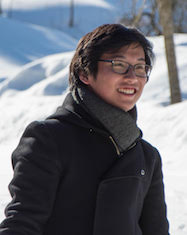 |
|
I am a postdoctoral fellow at the University of Pennsylvania. I earned my Ph.D. from the University of Illinois at Urbana-Champaign under the supervision of Robert G. Leigh. My recent work has focused on universal features of entanglement in quantum field theories and AdS/CFT. My long-term research interests include understanding the connection between geometry and quantum information theory within the AdS/CFT correspondence. |
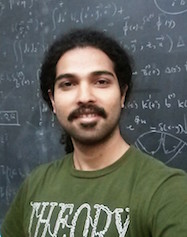 |
|
I am a particle cosmologist with a keen interest in the interplay of fundamental physics, cosmology, and astrophysics. I spend much of my time developing and testing new theories that could potentially explain the mysterious observation at the expansion of the universe is accelerating. Much of my research focuses on different modifications of gravity that could drive the acceleration but hide in the solar system using screening mechanisms. These modifications elude our current experimental tests and I spend a lot of my time devising novel methods for searching for them using objects such as stars, galaxies, and black holes. I am also very interested in the question of why there is more matter than antimatter in the universe and spend some of my time investigating possible processes in the early universe that could have led to this difference. |
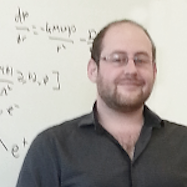 |
|
I am a postdoc shared between the University of Pennsylvania and the Vrije Universiteit Brussel. My primary interest is quantum gravity, specifically how spacetime emerges in the context of AdS/CFT, what is the role of entanglement in this emergence, and what are the general lessons that we can draw from understanding this. |
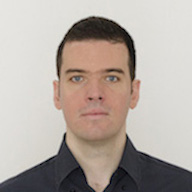 |
|
My main area of research is String Phenomenology though in the past I did some work in Topological String Theory. So far I worked on F-theory Grand Unified Theories with a focus on Yukawa couplings, moduli stabilisation and the structure of scalar potential in string compactifications and String Cosmology. |
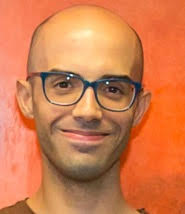 |
|
I'm a graduate student at the Center for Particle Cosmology. My research interests are both in high energy physics and cosmology. My recent work involves exploring soliton solutions and decay rates for galileon theories and also analyzing the theoretical consistency as well as observational constraints on coupled dark energy models. |
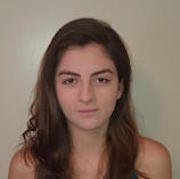 |
|
I study connections between holography and quantum information, particularly by using the AdS/CFT correspondence and other dualities to compute quantities like entanglement entropy. I am also interested in mathematical physics and quantum computation, separately from holography. |
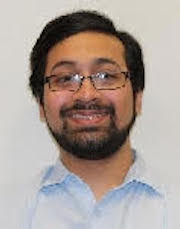 |
|
I'm a graduate student broadly interested in cosmology and gravity. My research has focused on developing new models of dark matter recently proposed by my advisor, Justin Khoury. |
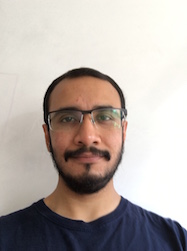 |
|
I am a graduate student in the High Energy Theory group at Penn broadly interested in quantum gravity and mathematical physics, especially in the context of the AdS/CFT correspondence. Specifically, I am studying the connections between spacetime geometry/topology and quantum entanglement, and applications to quantum information theory and black hole physics. |
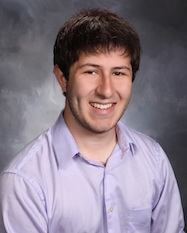 |
|
I am a graduate student working in particle physics and cosmology. My ongoing research focuses on the novel theory of dark matter superfluidity. I also study the phenomenology of neutrino oscillations. In the latter, to explain various oscillation anomalies, we consider coupling between neutrinos and the chameleon field. |
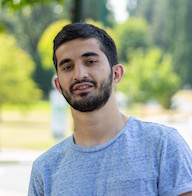 |
|
I am a graduate student in the High Energy Theory group at Penn. I am currently interested in flux compactifications of F-theory, constructing 4D N= 1 SUGRA theories with the Standard Model gauge group, three chiral generations, etc. |
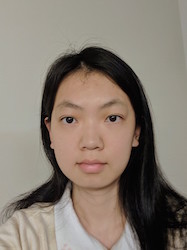 |
|
I'm a graduate student in the High Energy Theory physics group at Penn. I am broadly interested in superconformal field theories and F-theory. So, far my focus has been on 6D SCFTs and RG flows involving nilpotent deformations and corresponding nilpotent orbits |
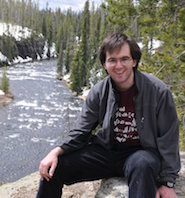 |
|
I'm a graduate student in the High Energy Group at Penn with research interests in String Theory and Supersymmetry. My recent work involved analyzing superparticle spectra in the B-L extension of the MSSM model and predicting decay signals that could be detected at the LHC in this context. |
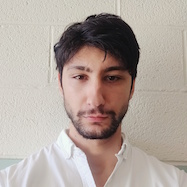 |
|
I’m a graduate student at Penn. I want to apply high energy theory (String Theory / Loop Quantum Gravity / AdS-CFT / Holography / Group Field Theory) to cosmology to either give predictions or explain phenomena. I’m interested in everything about the early universe, including the different alternatives of inflation (e.g., bounce / string gas cosmology / cyclic / ekpyrosis); the preheating/reheating period after inflation; the baryogenesis process; the cosmological constant problem; primordial black holes and the probable properties of dark matter. |
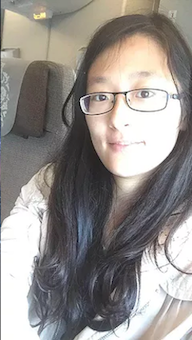 |
|
I am a high energy theory graduate student here at Penn. Quite generally, I am interested in exploring topics and techniques that further the understanding of quantum field theories and string theories at strong coupling. Areas of particular interest for the near future include topological field theories, F-theory, and supersymmetric gauge theories. I also study the interplay between algebraic geometry and homotopy theory, on the one hand, and rigorous formulations of quantum field theory on the other. |
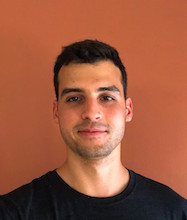 |
|
I am a graduate student at Penn Physics interested in high energy theory. I am tentatively interested in making connections between formal theory and phenomenology (both in cosmology and in particle physics). |
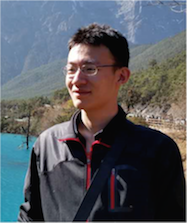 |
|
Currently I’m studying various quantifications of complexity in quantum systems, as well as the holographic dual of the entangled SYK model and its implications in ER=EPR. In general, I am interested in critical phenomena, spin glass theory and (quantum) information theory. |
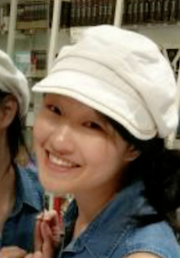 |
